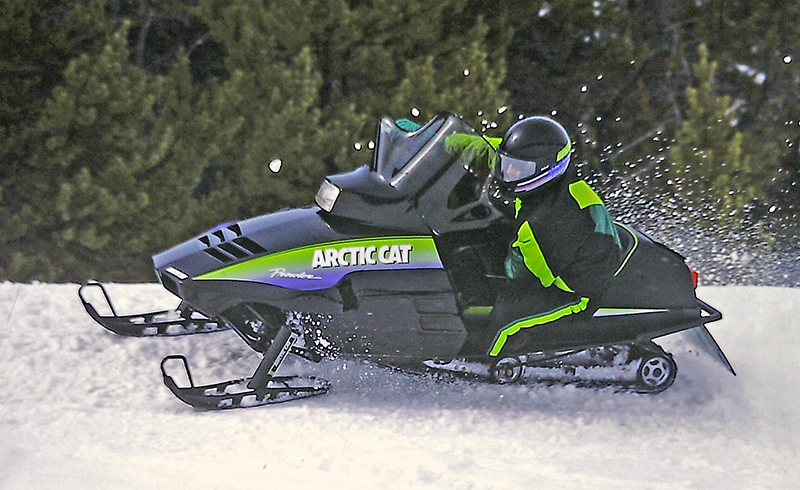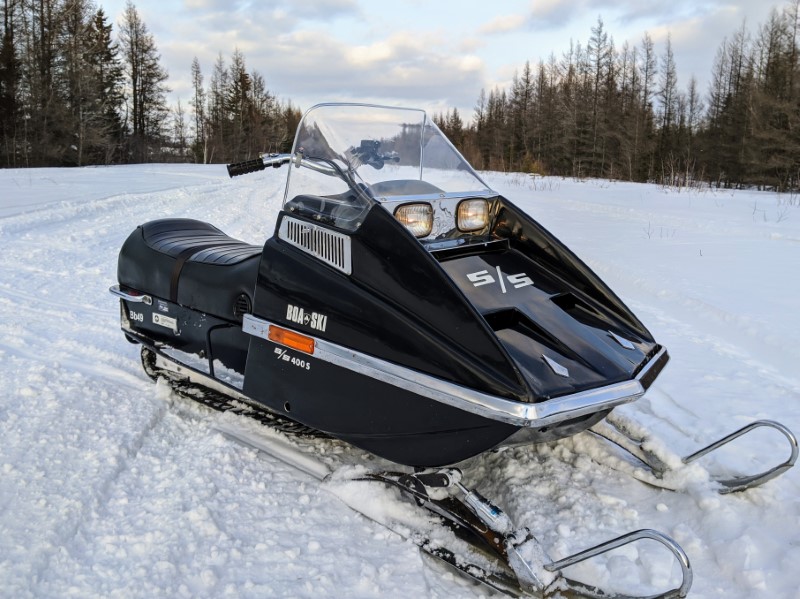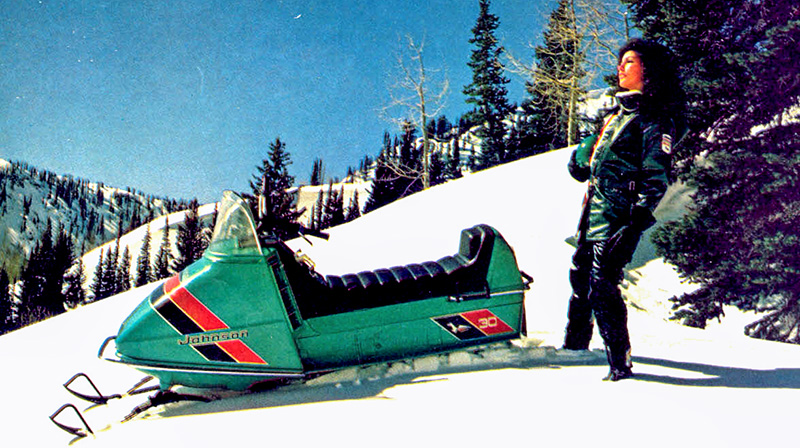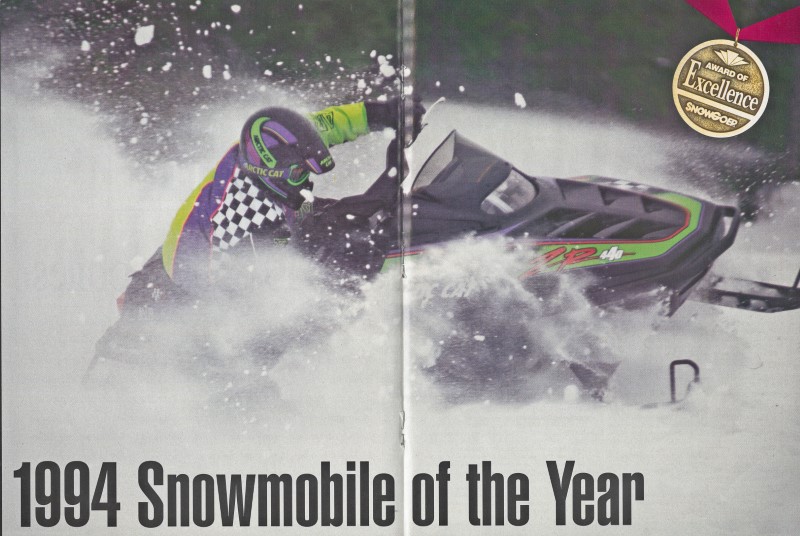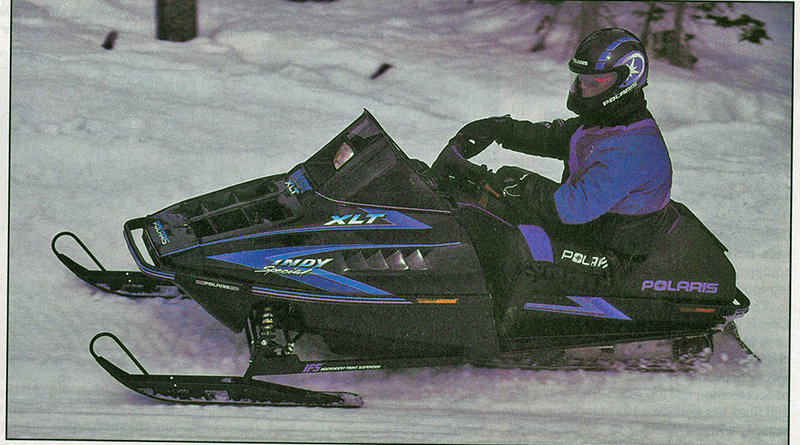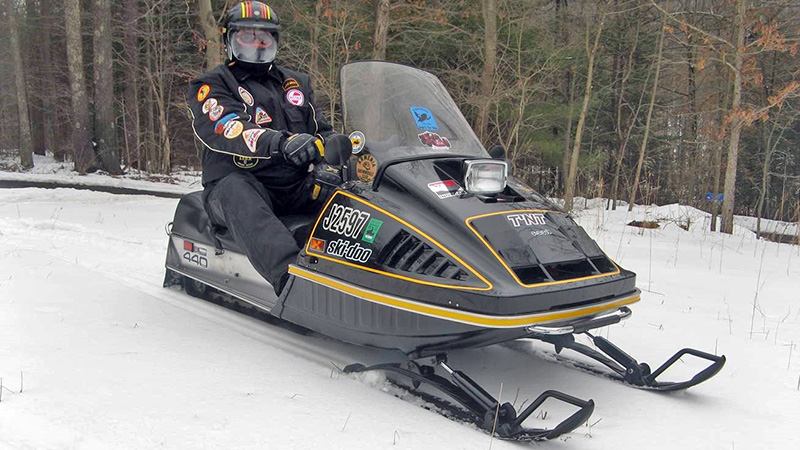
The pale light of the early morning sun illuminated the new machine on the full-page color brochure photo. The message was unmistakable. The 1976 Ski-Doo T’NT RV was the beginning of a new day for Ski-Doo performance trail sleds. The promotional flyers were more direct, bluntly stating, “Look at our get-serious T’NT R/V for ’76.” But they weren’t consistent about the RV designation, showing it both with and without the slash that was later dropped.
After arguably inventing the performance trail sled category in the late 1960s with the T’NT, Bombardier had surrendered leadership of this rapidly growing market segment to other companies. But it managed to stay competitive in Stock class racing, and the virtually new, from-the-ground-up 1975 T’NT RV 245 had won more sanctioned Stock races than anything else in its class.
Now there was a winning Stock racer marketed as a serious trail sled for performance-oriented recreational riders, too.
Changes For The Trail
The 1976 T’NT RV had substantial changes from the prior year’s Stock racer, but within the same basic concept. Beyond the color and trim, the most obvious changes were moving the headlight from inside the front scoop to the top of the hood, and the addition of a low windshield. A 114-inch internal-drive molded-rubber track on a longer suspension replaced the 102-inch cleated track on the racer. Mounted nearly 7 inches farther back in the chassis for better ride and stability, the longer track added five inches to the overall length of the machine. Fuel capacity was more than doubled to 5.5 gallons, and these changes added roughly 20 pounds to the machine.
Two free-air Rotax engines were offered: the over-achieving Type 247 of the race sled in the T’NT RV 250, and the more powerful Type 345 in the RV 340. Both used the unique rotary valve induction concept that added some complexity and weight, but allowed the engines to produce more power than contemporaries of similar displacement (although both required premium gasoline to do it).
The engines also introduced Mikuni VM-series float carburetors with external fuel pumps to Ski-Doo trail sleds. Besides allowing better performance, the carbs eliminated the vapor lock that had always plagued the diaphragm pumper carbs previously used. Power was delivered through a new square shaft clutch with a wider ratio than found on previous T’NTs.
Unlike earlier T’NTs, this was a single-seater with no provision for carrying passengers. This completed the metamorphosis of the snowmobile from a two-place utility to a strictly personal recreation device – a change that began with the original Ski-Doo T’NT in 1968 and ’69.
Performance And Problems
The new lightweight performance trail machine was received with praise.
“For a sled that is bred as a racer, the RV has made the transition from track to trail quite nicely,” reported Snow Sports magazine.
Acceptance by trail riders was quick, but not without consequences. The expansive-for-the-day 34-inch ski stance and 41.75-inch overall width forced snowmobile clubs to widen its bridges.
Very maneuverable due to sharp, precise steering with a tight 40-degree turning radius, Snow Sports commented that the wide, low slung machine had “excellent close quarters handling.” Editors were also impressed with the performance, noting, “In our speed runs, the 340 kept up with many machines 100cc larger.”
I can say from personal experience that the lightweight and responsive RV was an absolute blast to ride and I liked it better than almost anything else on the trails at the time.
That’s while it was running. Unfortunately, the Rotax free-air engines gained a reputation for being unreliable, and that reputation would unfairly sully the image of all free-air engines in the eyes of many.
Nevertheless, the trail model RV sold well and stayed in the Ski-Doo model line-up more or less unchanged, except for twin pipes on subsequent models, through 1978.
That year the free-air RV was joined by a heavier but more powerful and reliable liquid cooled variant called the Blizzard 6500 Plus. Set apart by a black hood, the 6500 also had a more reliable ignition system, greater gas capacity and a 16.5-inch wide track; tweaked further, this became the 1979 Blizzard 7500 and the last trail development of the RV chassis.
Most of these models also had very similar not identical Moto-Ski versions in orange and navy blue livery.
Returning To The Racing Roots
One very notable variant was the 1977 and ’78 RV Cross Country, a terrain racer with a 75 HP Type 354 free-air 340 engine, twin fuel tanks carrying more than 10 gallons of gas and a tall windshield. The 1977 model also had twin pipes and a massive seat back, but the ’78 reverted to the single pipe and straight seat back of the trail sleds. RV Cross Country production was only 125 units for 1977 and 250 for 1978 – but in the very capable hands of Gerard Karpik, these models became consistent winners.
The 1979 Blizzard Cross Country – a terrain racer version of the liquid-cooled Blizzard 7500 – was the final variant, and it continued to win as the leaf spring era was drawing to a close.
Star of the oval track, terrain racing and spirited trail riding, the RV remains as one of the best and most versatile Bombardier performance sleds of all time.
The 1976 T’NT RV was the first version available to the average trail rider, making it an outstanding collectible for today’s vintage enthusiasts.
Editor’s Note: Every issue of Snow Goer magazine includes in-depth sled reports and comparisons, aftermarket gear and accessories reviews, riding destination articles, do-it-yourself repair information, snowmobile technology and more! Subscribe to Snow Goer now to receive issues delivered to your door 6 times per year for a low cost.


